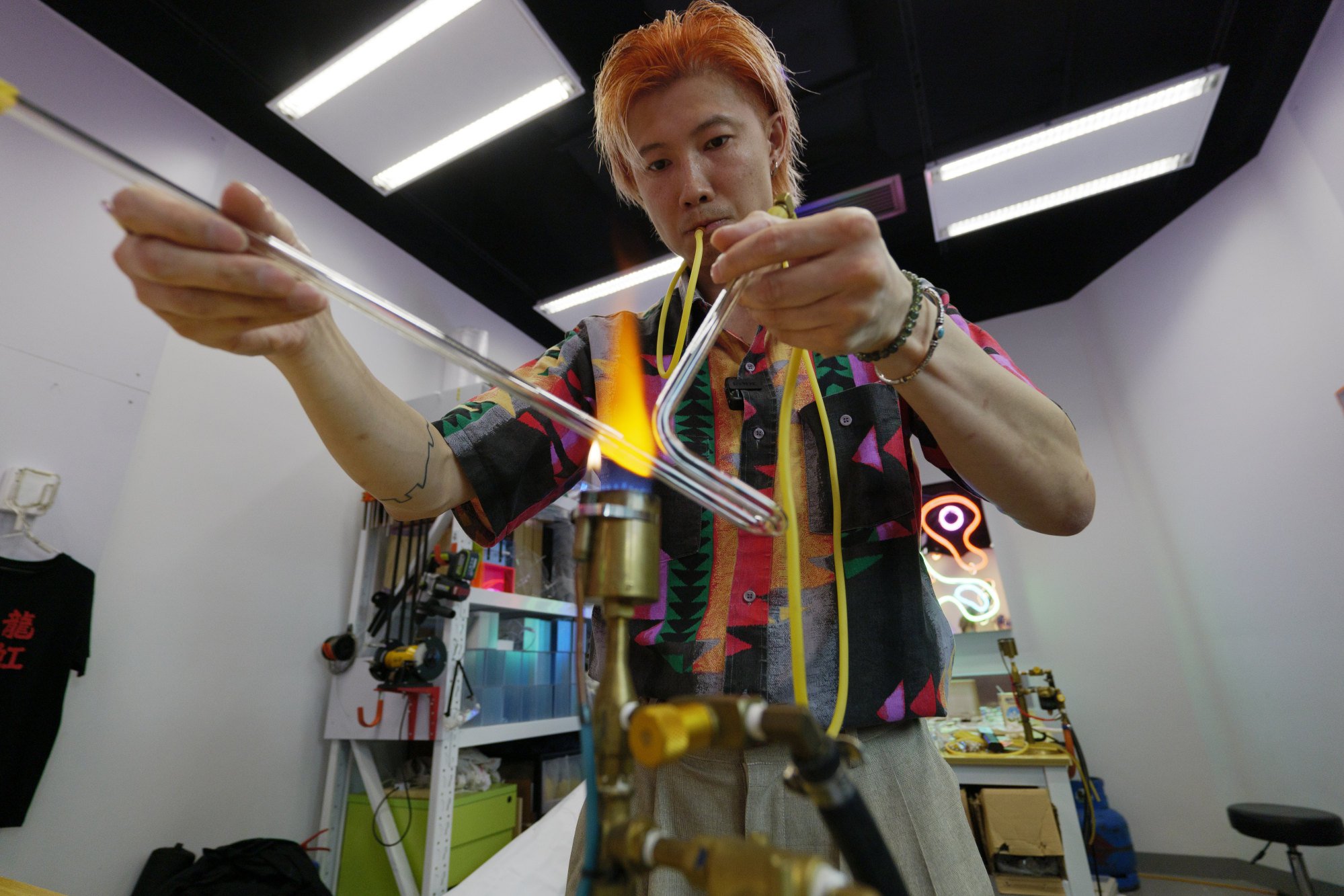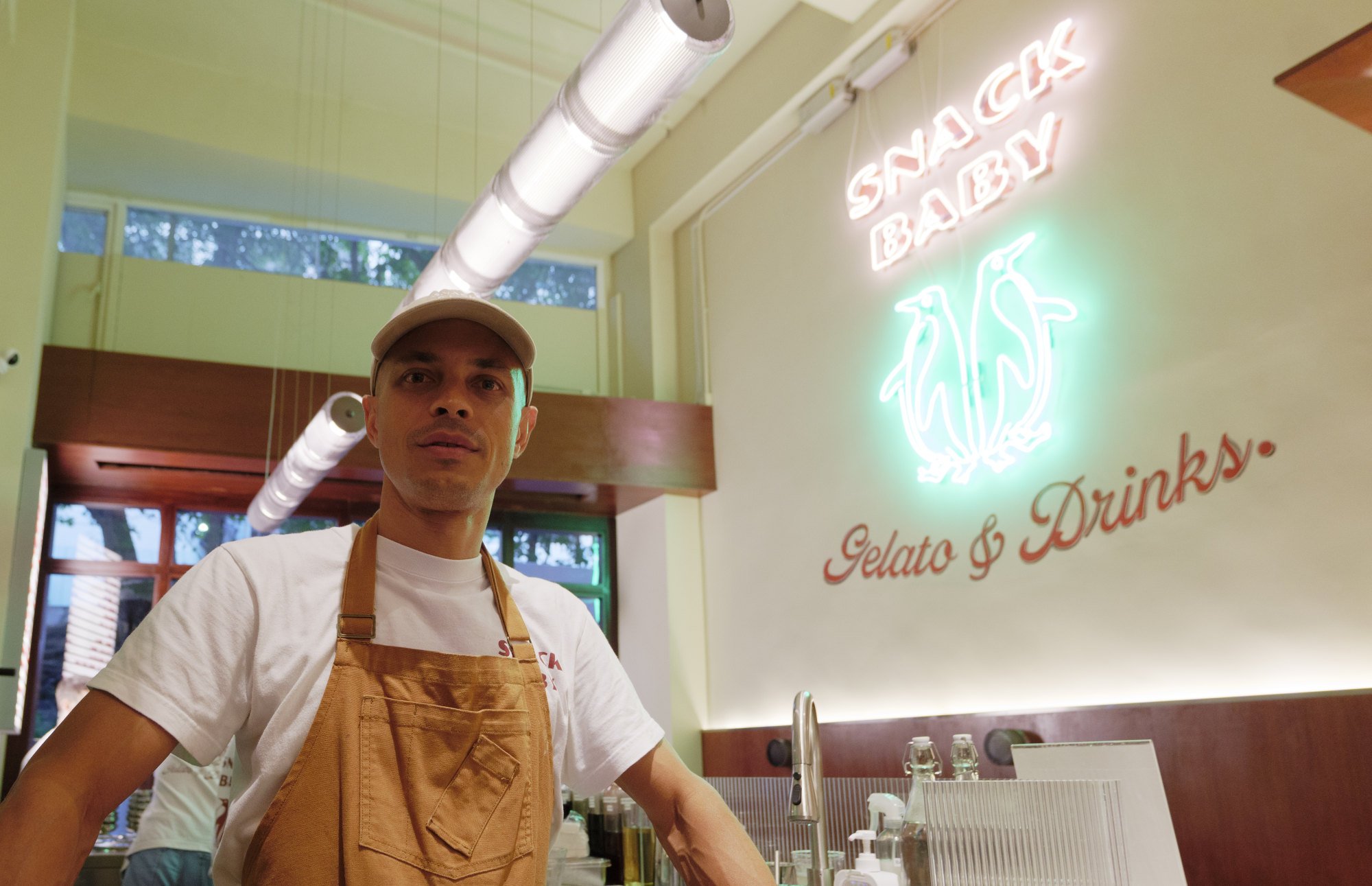At his studio in Hong Kong’s Wong Chuk Hang area, Jive Lau Ho-fai spends hours over 1,200 degree-Celsius (2,192 Fahrenheit) burners as he meticulously bends glass tubes for neon signs.
KowloNeon is decorated with his neon creations, including a 200cm (79 inches) face-off between a dragon and phoenix.
At 41, Lau is relatively young compared with the few remaining neon masters in the city. He began learning the craft five years ago after witnessing the disappearance of traditional neon signs and learning about their cultural significance.
“At first, I had an idea about preserving Hong Kong’s beautiful things,” Lau said. “You could say it was my initial calling – to make something and bring some hope to the place.”
Brightly lit, colourful neon signboards used to be such a common sight that they became a cultural symbol of the city, featured regularly in tourism advertisements, postcards, souvenirs and films.

But they have been disappearing over the past two decades, as a result of stricter regulations and the growing popularity of cheaper LED alternatives.
Tetra Neon Exchange, a non-profit organisation dedicated to preserving neon signs and the culture surrounding them, estimated there were only about 500 neon signs left, compared with tens of thousands in the 1980s.
Lau said that while neon signs had been vanishing from Hong Kong streets, more of his clients had begun putting them up indoors.
“I think they really appreciate neon, so they make a custom order for their shops or homes,” he said. “They miss that facet of Hong Kong or the nostalgia, and neon brings a special feeling to them.”
Neon signs are made of electrified glass tubes or bulbs that contain rarefied neon or other gases. For Lau, those physical properties contribute to their magic.
“This is not like other light sources,” Lau said. “It really looks alive.”
When customers walk into the Shop B restaurant in Sai Ying Pun, they are greeted by a neon rendition of the shop’s logo, illuminating the ground floor in a warm orange hue.

The shop offers a modern take on traditional dai pai dong-style dishes, and for founder Natalie Ngan, having the indoor neon sign “just made sense”.
“Growing up, I always saw them, so it’s just something that is really Hong Kong to me,” she said.
Ngan added the sign also helped create a “younger” atmosphere for her shop and she planned to install another upstairs as customers appreciated it too.
“They really like it,” she said.
For some shop owners, keeping the neon lights indoors is easier than navigating the rules to put up an outdoor signboard.
Shops that want to erect large exterior signboards must first obtain approval of their plans and consent from the Buildings Department, while those that are “relatively small in scale” fall under the department’s Minor Works Control System.
Signboards are classified into three categories based on their size and safety risk, each with its own specifications and requirements.
“Whenever you want to change the actual design of the facade, for whatever reason … you need to resubmit your application and therefore start the process back from zero, which is a bit of an annoyance,” said J.C. Lombard, founder of Snack Baby, which opened recently along Hollywood Road.

The Italian-style ice cream shop is easily identifiable by the pair of large green neon penguins on one wall, a popular backdrop for customers snapping selfies with their freshly bought gelato in hand.
Lombard, who is from the French Caribbean and has lived in Hong Kong for 15 years, said he knew the significance of neon lights in the city and felt it was a shame that fewer shops displayed them.
That was why he had his neon penguins made by Lau.
“We wanted the original technique to make our neon,” he said.


